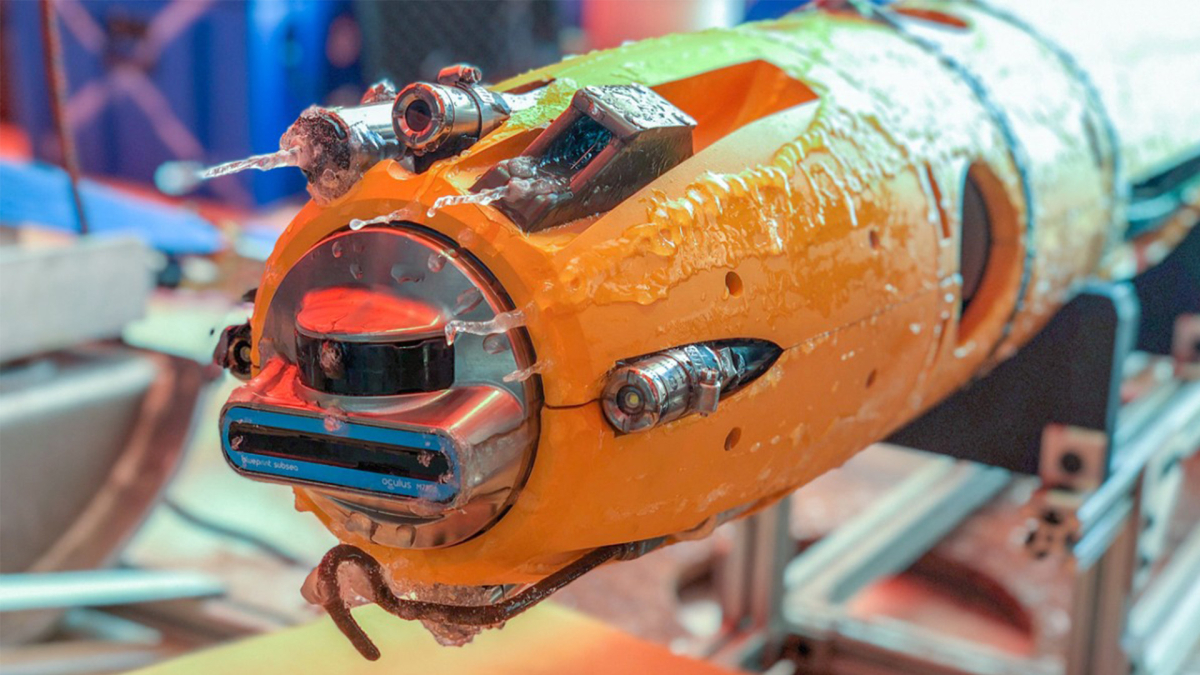Robot captures unique footage beneath the Antarctic Ice Shelf
A team from Cornell University has developed the so-called Icefin robot, which provides previously unseen insights into crevasses. The robot has cameras and measuring devices to record what is happening beneath the surface for the researchers.
Among other things, it was used around 600 meters above the point where the Ross Ice Shelf meets the Kamb Ice Stream. There it was lowered through a borehole drilled into the ice with hot water, like Cornell University in one blog article writes.
In total, the researchers made three dives here, covering a distance of almost five kilometers. This is how they got to the bottom of the sea under the ice.
Icefin not only takes pictures, but also precisely measures its surroundings. Among other things, it takes data on the water conditions, temperature, pressure and salinity of the water.
The robot Icefin can dive deep into the ice shelf. (Photo: NASA PSTAR RISE UP/Schmidt/Lawrence)
The researchers were also able to observe a phenomenon called “ice pumping”. Fresh water from the sea is pushed into the gaps in the ice from below and freezes there again.
This results in some strange formations such as dimples similar to golf balls, waves or vertical channels. “This allows these large ice shelves to protect and heal themselves,” said Peter Washam, polar oceanographer on the Icefin science team.
“Much of the melting that occurs deep near the baseline then refreezes that water and accumulates as sea ice at the bottom of the ice.”
The researchers looked primarily at the Thwaites Glacier and the Kamb Ice Stream. Thwaites is one of the most unstable glaciers in Antarctica. The Kamb Ice Flow, on the other hand, has stagnated since the late 19th century.
“Antarctica is a complex system and it’s important to understand both ends of the spectrum – systems that are already changing rapidly and those quiescent systems where future changes pose a risk,” said Britney Schmidt, leader of the research team. “Kamb and Thwaites’ joint observation helps us learn more.”
Icefin is intended to help researchers in the future to better understand Antarctica’s glaciers and ecosystem.



